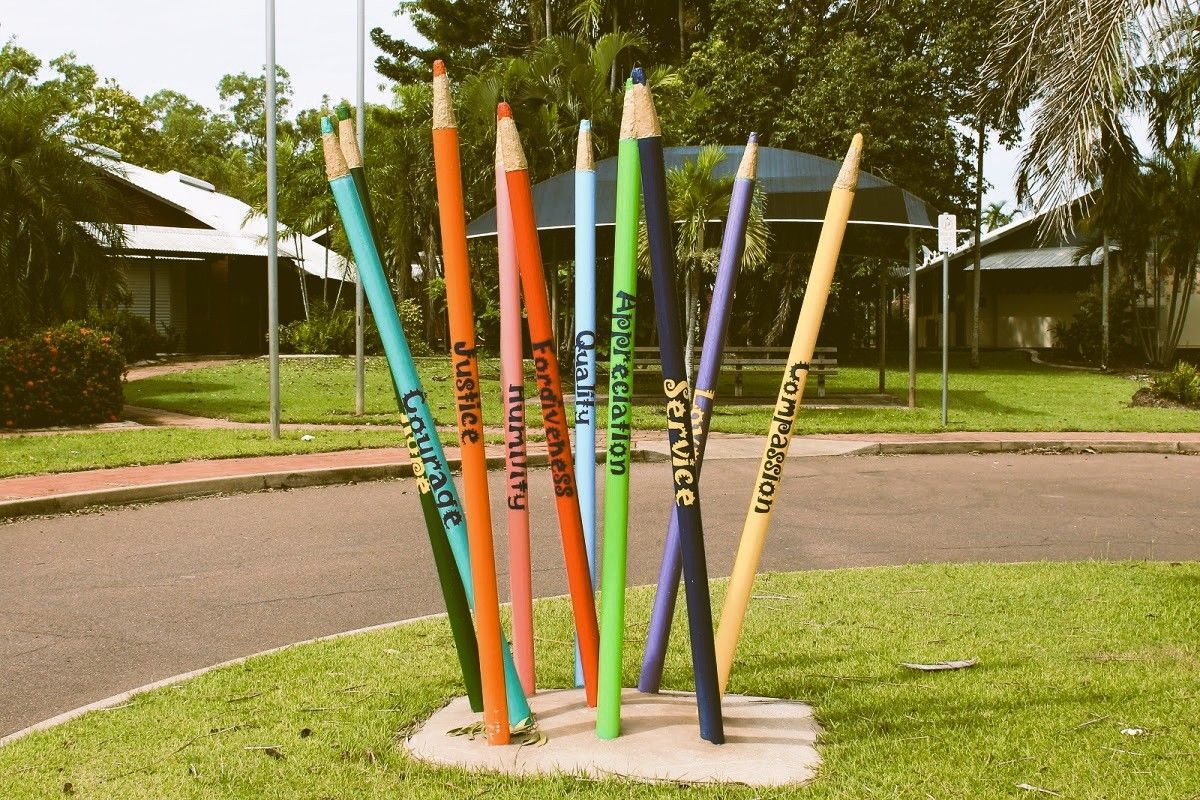Character, Culture, Care and Belonging
THESE FOUR IF ATTENDED TO MAKE A DIFFERENCE IN SCHOOLS
It was the height of the Baby Boom when I started school in 1957. I recall having 54 kids in my class in year 3 though about 37 in grade 1 (number in my grade 1 photo). The school which was a government school had 3 key building styles. One was the old wooden building at the front, housing 3 classes, I think. The other two were rather uninviting structures. The old building was quite tall accentuated by the fact that at 6, I was actually quite short but it did have character, warmed in winter by a wood heater fired with red gum (or jarrah) blocks, which once provided a surface to Melbourne City roads as wooden cobbles. These were collected by third grade boys from a pile in the yard. The boys were designated in this highly responsible task, as wood monitors.
We were given interesting responsibilities - you could also be the milk monitor to collect, with a mate, the milk from near the front gate. Often it warmed gently in the sun to a taste that today would indicate it was becoming something like yoghurt, though I don’t think yoghurt existed in what was then the outer suburbs of Melbourne. All government school students of a certain age were given free milk each day.
You probably will be surprised to know that I became the incinerator operator in grade 4, tipping the bins into the incinerator - that required ultimate skill and possibly set me on my path to dabbling in leadership. The engagement in real tasks really promoted a feeling of belonging though I’m sure the incinerator responsibility would not be acceptable today - however I enjoyed doing it.
But back to the buildings. The old one did have some character and provided a particular identity to the school. I clearly remember the smell of the corridor which on a wet day, and there were plenty of them, would smell of wet rubberised raincoats and for some reason, stale sandwiches. Each class had a platform which would house the teacher’s desk and give the teacher a height advantage if they happened to be very short. With the need to educate the vast number of baby boomers, new classrooms were unimaginatively designed by government architects and became known as “chicken coops”. These spread in schools throughout the suburbs and unlike the old building had zero character.
At our school they were aligned along the southern end of the bitumen quadrangle which also lacked character but was suitable for the morning parade before we all marched into school, our ears ringing from the various transgressions brought to our attention by the Head, a person to definitely be feared. There were also two identical buildings which were more “industrial” than “school” and were made of metal. They were hard in appearance and very institutional. The final buildings I recall included my fourth grade classroom which was, I think an army hut, - and there were two or three of them. They were designed for military purposes and looked it.
So by and large the buildings were far from helpful in generating the feel of a positive character in the school.
The challenge for a teacher is to enhance the character of a school if it doesn’t have welcoming, interesting, creative buildings. Step one is in their classrooms - how they set them out, how they make them feel positive and how they make students feel glad to be there. My grade three teacher was successful at this. He was a genuine naturalist and during the year published his first book, an appealing volume even to an eight year old. Part of it was bringing his passion into the classroom. We had a large gold fish, “Goldie”, a Blue Tongued lizard, “Bluey”. The chalk board was interesting and we all made natural history dioramas - mine a Lyrebird dancing. I loved building it.
Primary school teachers are great at creating interesting classrooms, making them places of character. A boring classroom is unfortunate. I have also seen some fantastic secondary classrooms. One of my teachers turned his classroom into ancient Egypt. The students loved it. Often in schools secondary teachers teach in a variety of rooms. If possible it is valuable to attach two of three teachers to a room so they can inject character into it.
I am involved in an organisation that provides supported independent living houses to people who have a disability. The organisation places huge value on how the gardens of the various houses are presented. They are terrific, soften the environment, make it colourful and a really attractive place to live. Gardens also raise spirits and in particular for children help to enhance imagination and promote belonging. Students are proud of their school if it is interesting and welcoming. The bitumen assembly space at my primary school was oppressive and far from inviting. It genuinely required an infusion of imagination. The shape and colour of buildings and how they are arranged is also helpful in generating character. Symmetrical lines are not always the most interesting layout.
A real bonus in today’s education world is creative playground equipment. I helped to build, at my son’s primary school in Victoria, playground equipment years ago and whilst ok it was far from being bright and cheerful as it was built out of treated pine logs with bark underneath. Today’s equipment is colourful, more imaginative and uses safer materials. It really lifts the character of the school yard. A challenge is also to introduce “play” items which secondary students will use.
A school’s character should reflect its culture. Oppressive, overbearing buildings will not support an open, friendly, creative culture. I strongly believe that buildings really “speak” to students. If we keep Character, Culture and Care continually as essential in our schools then we will enhance the feeling of Belonging in our students and this should be a prime objective. If students feel they belong then they will be happy and will likely achieve their best. It is always constructive to look at students as they come through the gate and reflect on whether they really feel that they belong and why, and if they don’t, why.
A few days ago I visited Austin Asche AC KC former Administrator of the NT and Chief Justice of the Supreme Court of the NT who has been the wonderful Patron of AISNT and speaker at many AISNT awards ceremonies where he would present such memorable, brilliantly, crafted speeches. These have been published in a book called “Teacher’s on Top”. In a couple of weeks Austin will turn 97. He is amazing - he reads prolifically, explores really interesting ideas and has such a sharp, creative, critical, mind with an everlasting curiosity. And his ability to recite poetry is amazing. As you might expect I had a great, enriching, time with him. If the culture of a school I was involved in fostered at least some of these qualities in the students I would be very happy indeed.
Within our schools if we are to offer really effective education then we must put, as a very high priority, Caring for our school’s Culture, Character and Belonging.
Chris Tudor,
Principal Liaison & AISNT Historian



